Christina Quarles
Collapsed Time
24 Mar - 17 Sep 2023
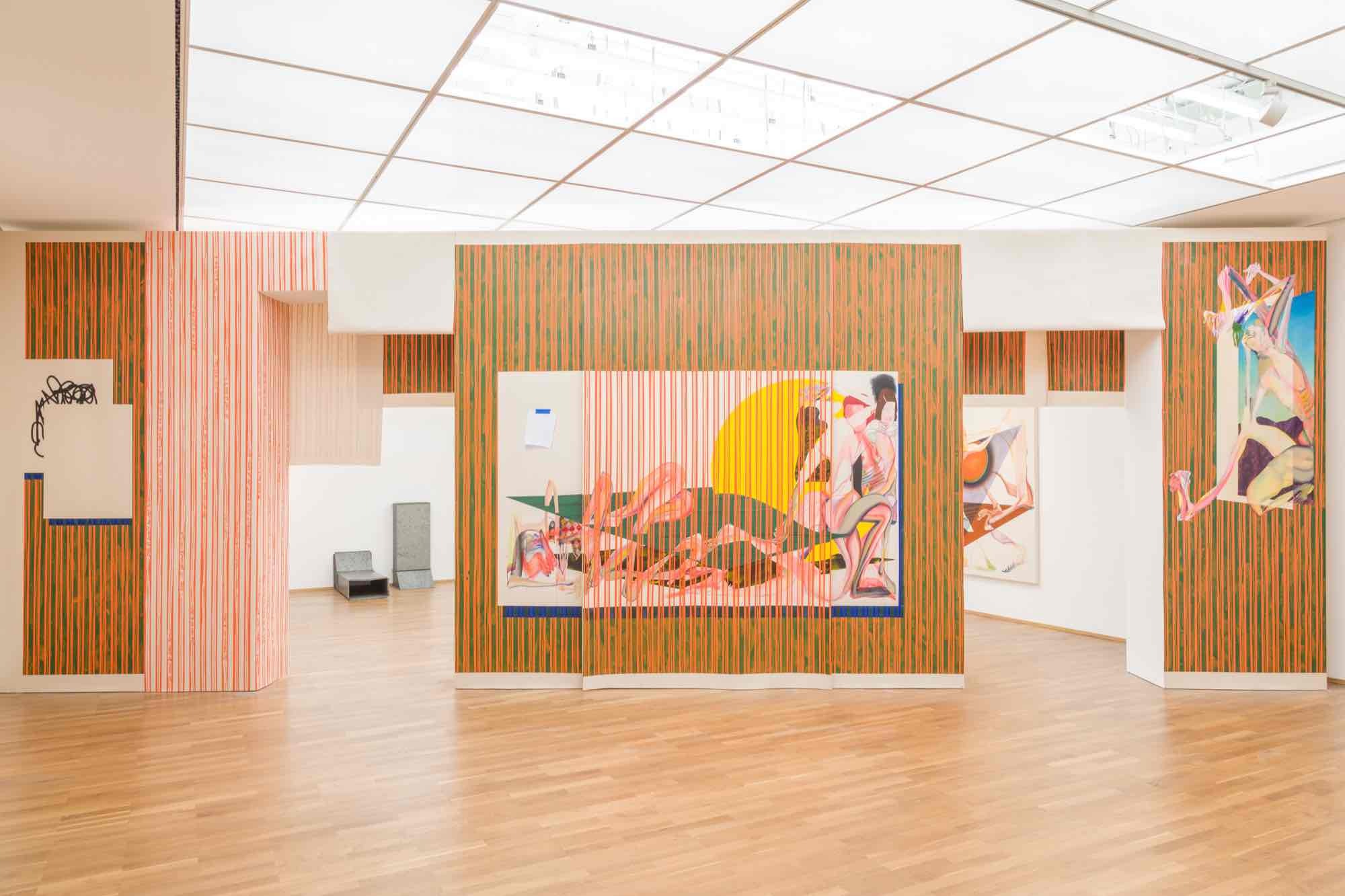
Exhibition view “Christina Quarles. Collapsed Time”, Hamburger Bahnhof – National Gallery of the Present © Christina Quarles. Courtesy the artist, Hauser & Wirth, and Pilar Corrias, London. Photo: Jacopo La Forgia
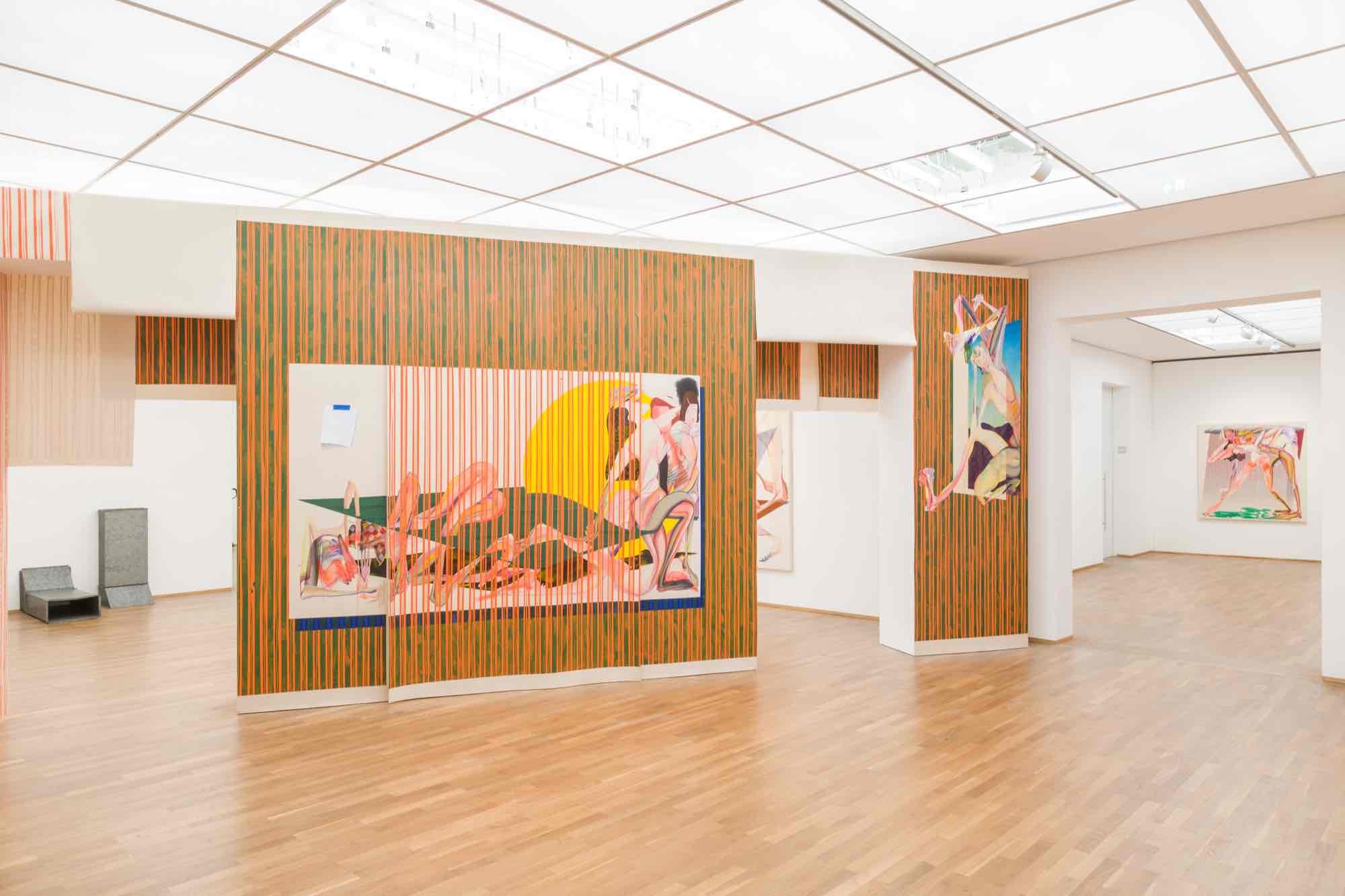
Exhibition view “Christina Quarles. Collapsed Time”, Hamburger Bahnhof – National Gallery of the Present © Christina Quarles. Courtesy the artist, Hauser & Wirth, and Pilar Corrias, London. Photo: Jacopo La Forgia
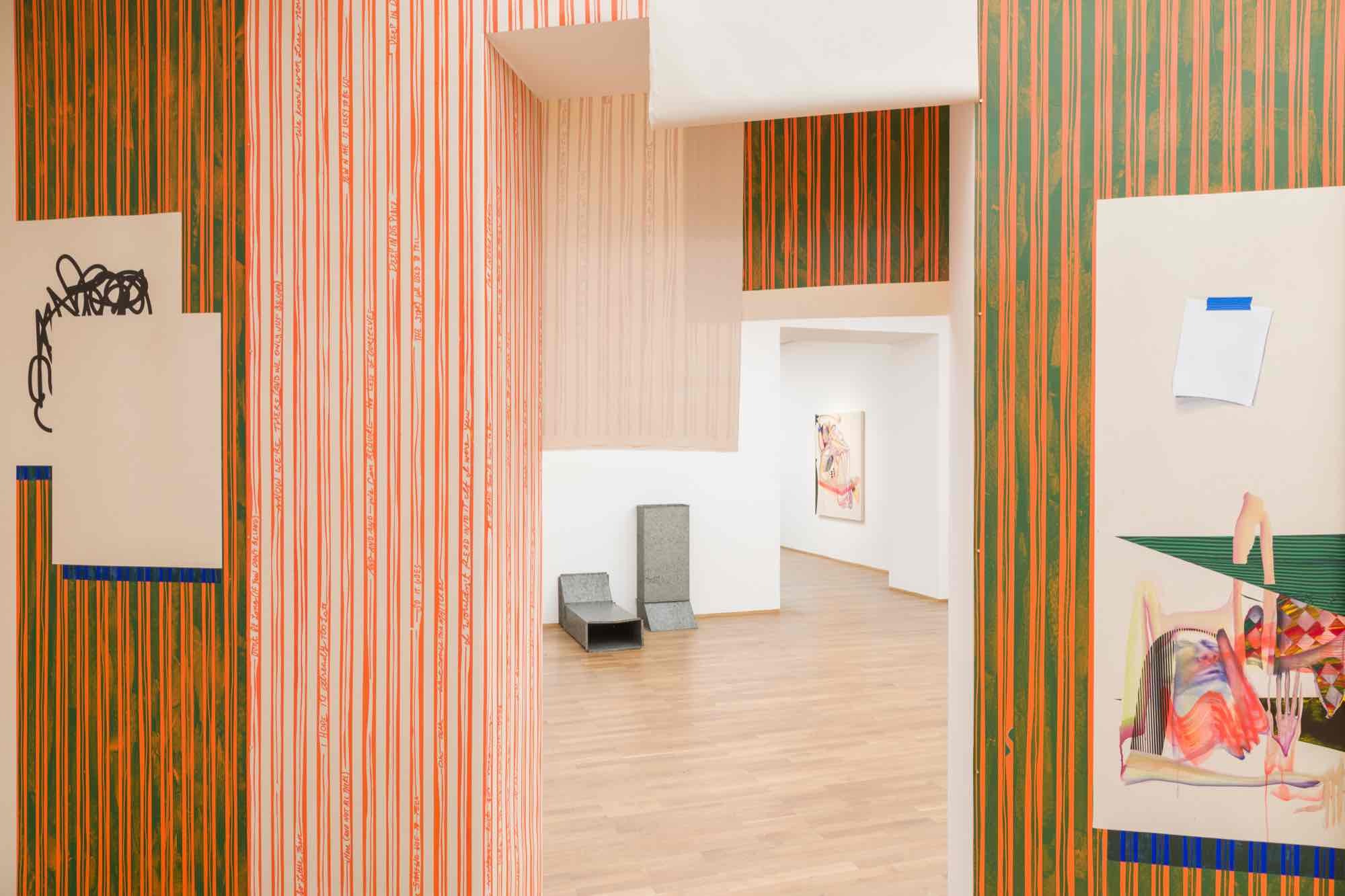
Exhibition view “Christina Quarles. Collapsed Time”, Hamburger Bahnhof – National Gallery of the Present © Christina Quarles. Courtesy the artist, Hauser & Wirth, and Pilar Corrias, London. Photo: Jacopo La Forgia
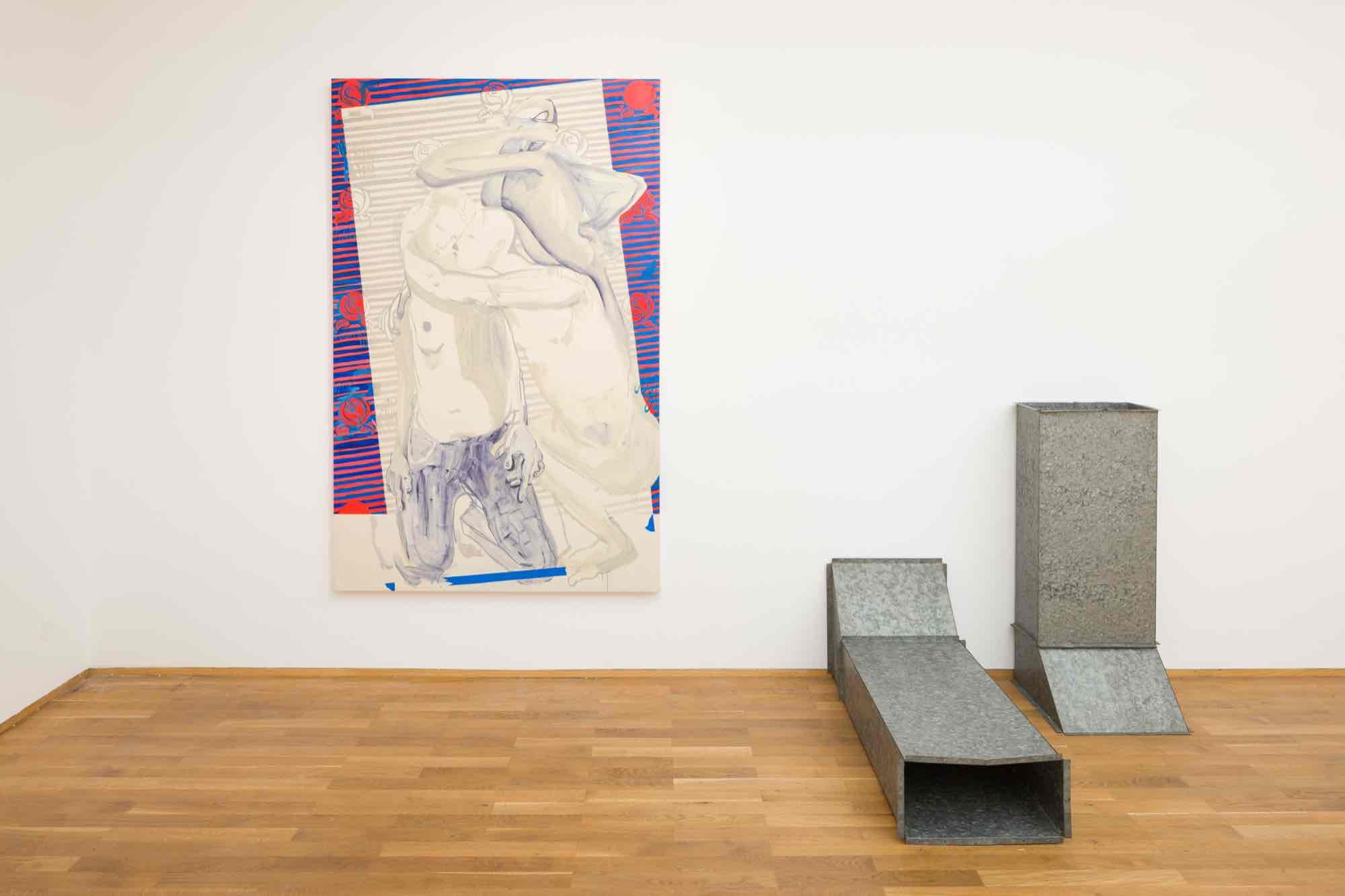
Exhibition view “Christina Quarles. Collapsed Time”, Hamburger Bahnhof – National Gallery of the Present © Christina Quarles. Courtesy the artist, Hauser & Wirth, and Pilar Corrias, London. Photo: Jacopo La Forgia
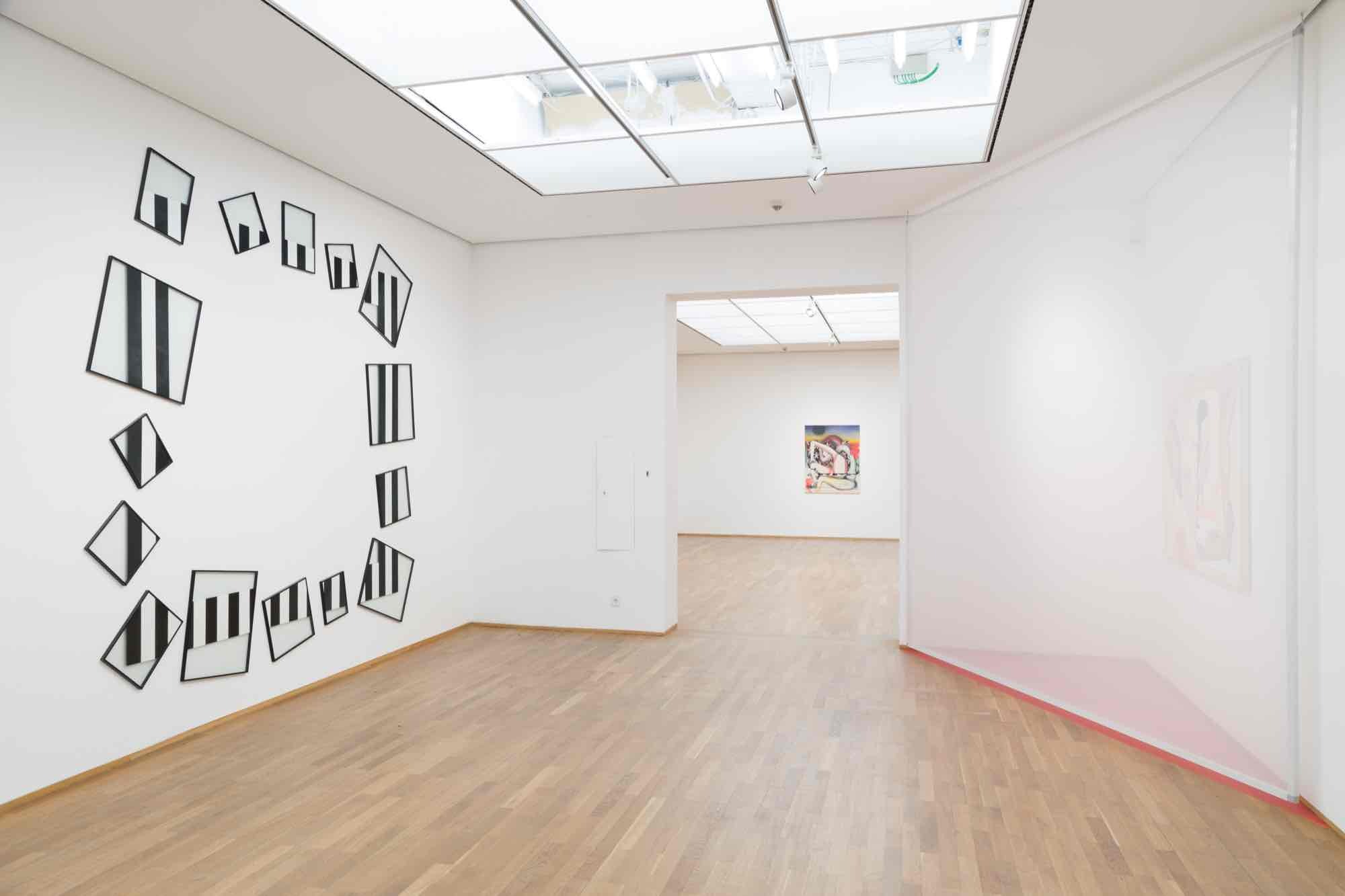
Exhibition view “Christina Quarles. Collapsed Time”, Hamburger Bahnhof – National Gallery of the Present © Christina Quarles. Courtesy the artist, Hauser & Wirth, and Pilar Corrias, London. Photo: Jacopo La Forgia
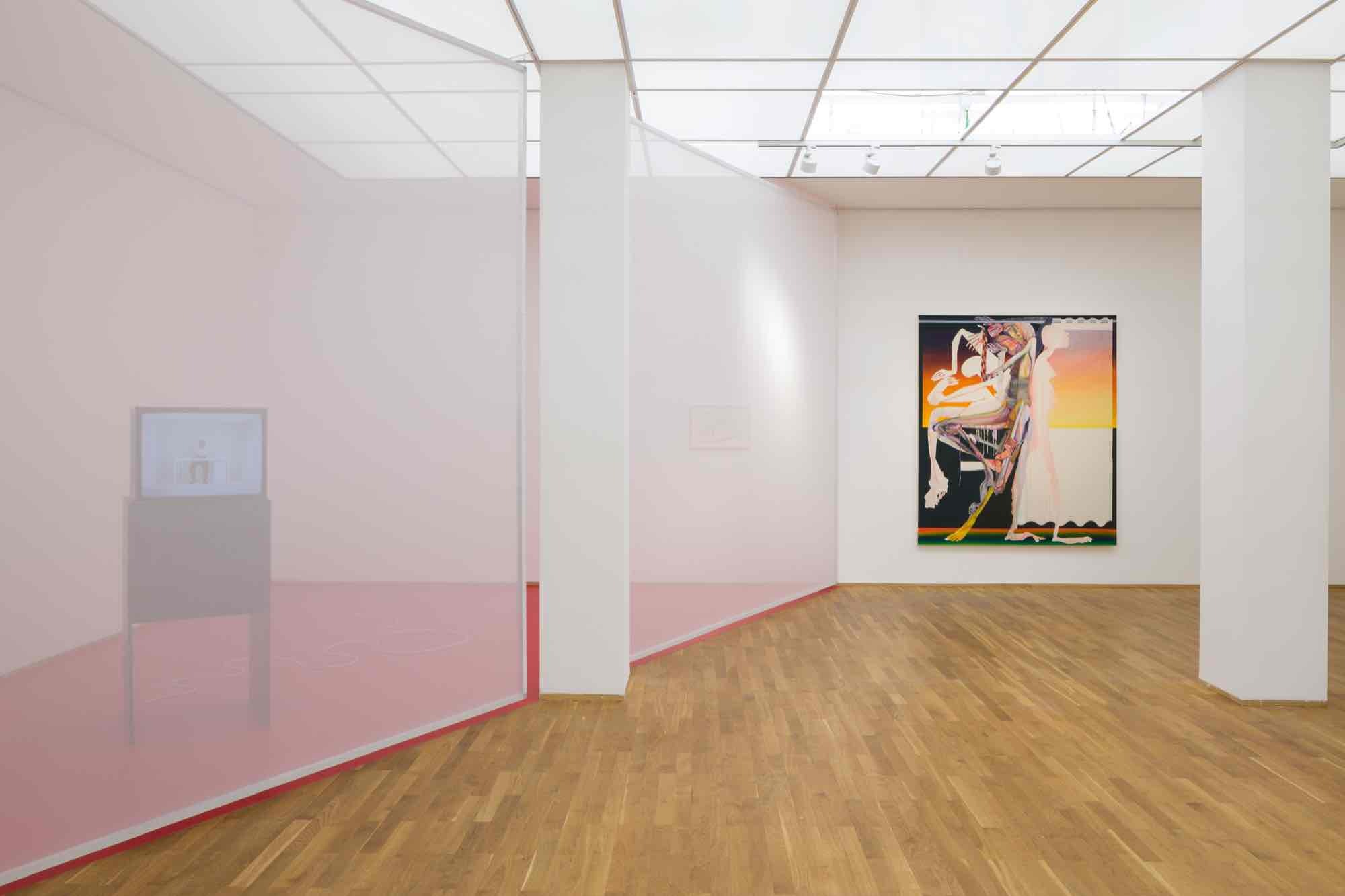
Exhibition view “Christina Quarles. Collapsed Time”, Hamburger Bahnhof – National Gallery of the Present © Christina Quarles. Courtesy the artist, Hauser & Wirth, and Pilar Corrias, London. Photo: Jacopo La Forgia
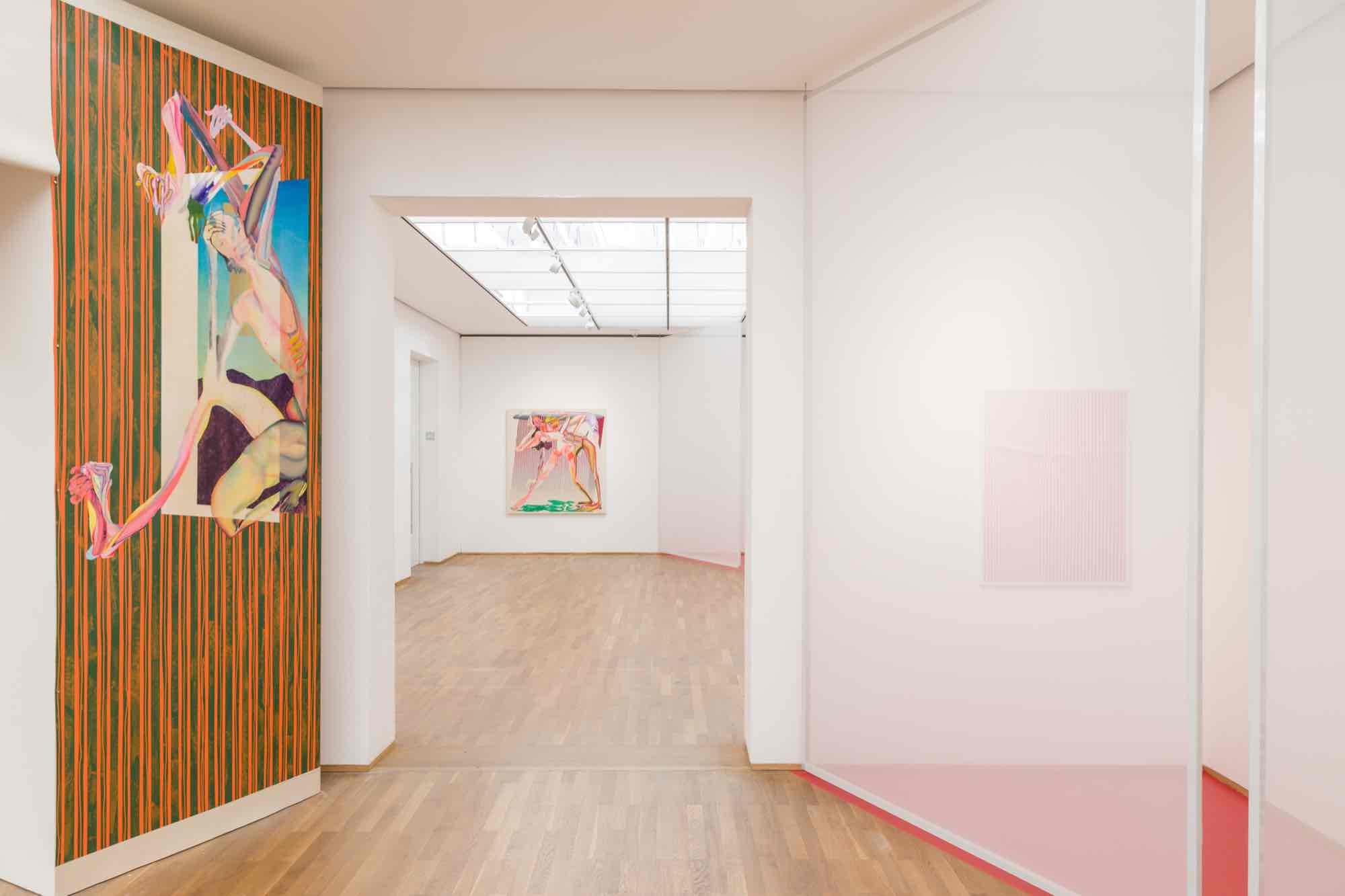
Exhibition view “Christina Quarles. Collapsed Time”, Hamburger Bahnhof – National Gallery of the Present © Christina Quarles. Courtesy the artist, Hauser & Wirth, and Pilar Corrias, London. Photo: Jacopo La Forgia
“Christina Quarles. Collapsed Time” is the first institutional solo exhibition in Germany of LA-based artist Christina Quarles (b. 1985 in Chicago). It features her largest, site-specific painting to date: a six-panel, unstretched canvas wrapped over and around a wall with two openings that visitors can walk through. This new work, commissioned specifically for the exhibition, is presented alongside a focused selection of twelve paintings, mostly large in scale, and eight works on paper that introduce the artist’s distinct painting practice over the last decade. In addition, works from the National Gallery collection by the artists Absalon, Vito Acconci, Stanley Brouwn, Daniel Buren, Annette Kelm, Nam June Paik, and Charlotte Posenenske appear in dialogue with Quarles’s paintings and drawings. Consisting of paintings, sculptures, photographs, and videos from the early 1960s until the 2000s, these works echo some of the questions that Quarles tackles in her own practice, namely the impact that physical and psychological confinement have on the representation of the human body. The physical experience of confinement is explored further through an architectural construction that was conceived as a recurring component throughout the exhibition galleries. Walls made of gauze, a material that is used in theatre productions to hide and reveal décors, objects, and actors divide the rooms into smaller segments. Like the lines and planes that confine, obscure, and cut through the figures in Quarles’ paintings, the works of art in the exhibition appear and almost disappear behind the smoky scrims that entrap them.
In her paintings and drawings, Quarles reflects on the experience, to use her own words, of “living in a racialised, gendered body.” While born into a multi-racial family, with a Black father and white mother, she is often misidentified as white due to her fair skin. In her art, she explores the experience of having an identity that does not fit neatly into fixed categories. Through composition, patterned planes, and imaginative environments Quarles anchors and fragments her figures. The bodies that appear in her paintings are often contained within the limits of the canvas, or a pattern, but their confinement also propels them to connect with other figures and defy the boundaries they encounter. The figures in Christina Quarles’ paintings do not possess a fixed gender identity, age, or weight. They are seductive, yet somehow forbidding. Desire, sexuality, and gender identification are important parts of how we define ourselves, but intimacy in Quarles’ work is not just about romance, it is also about family, grief, and the pain of not being seen for who you are. Her figures cannot be “read,” without the acknowledgement of these complexities.
For her exhibition at Hamburger Bahnhof, Quarles has researched the National Gallery Collection, and carefully selected a number of works that she felt shared similar formal and conceptual concerns. In Quarles' paintings, for example, the figures often struggle with the interior confining the space they inhabit. It is often unclear whether they are voluntarily withdrawing from, or being forced into the spaces that engulf them, The video "Solutions" (1992) by Absalon, evokes a similar uncertainty. As the artist explores the possibilities of navigating the white space in which he appears, it remains unclear whether he has been incarcerated, or has deliberately gone into self-isolation. Repetition and mechanization are also important aspects in Christina Quarles’ painting process, which is based on the muscle memory acquired by drawing the human figure over and over. This process of seriality is evoked by Charlotte Posenenske. The sculpture that Quarles selected by the late artist, to give another example, is composed of two identical units that can be presented in any configuration. Placed next to each other, one lying on the floor and the other upright, they provide an unexpectedly body-like parallel to the isolation and intertwinement of figures that appear in many of Quarles’ paintings. These dialogues, and several others that are on display turn this exhibition into an opportunity to rethink works form the National Gallery collection, imbuing them with new readings, and expanding the aesthetic experiences and intellectual exchange that they can provide. “Christina Quarles.
Collapsed Time” introduces the artist’s work to a new audience in Berlin. In revealing her ability to conceive the world as a place where bodies defy the limitations of singular identities and fixed markers of race, gender and sexuality, the exhibition is a timely platform to open up the conversation around a number of pressing issues that are key to advancing the museum’s commitment to inclusion and diversity.
A bilingual publication (German/English) accompanies the exhibition. It includes a curatorial essay by Sam Bardaouil and Till Fellrath, an extensive interview with Christina Quarles and a contribution by Jillian Hernandez, Associate Professor at the Center for Gender, Sexualities, and Women's Studies Research at the University of Florida, USA. The fully illustrated catalog features installation views from the exhibition. It is the first in a series of publications focusing on solo presentations of contemporary artists at Hamburger Bahnhof.
Curated by Sam Bardaouil and Till Fellrath, directors at Hamburger Bahnhof – Nationalgalerie der Gegenwart.
In her paintings and drawings, Quarles reflects on the experience, to use her own words, of “living in a racialised, gendered body.” While born into a multi-racial family, with a Black father and white mother, she is often misidentified as white due to her fair skin. In her art, she explores the experience of having an identity that does not fit neatly into fixed categories. Through composition, patterned planes, and imaginative environments Quarles anchors and fragments her figures. The bodies that appear in her paintings are often contained within the limits of the canvas, or a pattern, but their confinement also propels them to connect with other figures and defy the boundaries they encounter. The figures in Christina Quarles’ paintings do not possess a fixed gender identity, age, or weight. They are seductive, yet somehow forbidding. Desire, sexuality, and gender identification are important parts of how we define ourselves, but intimacy in Quarles’ work is not just about romance, it is also about family, grief, and the pain of not being seen for who you are. Her figures cannot be “read,” without the acknowledgement of these complexities.
For her exhibition at Hamburger Bahnhof, Quarles has researched the National Gallery Collection, and carefully selected a number of works that she felt shared similar formal and conceptual concerns. In Quarles' paintings, for example, the figures often struggle with the interior confining the space they inhabit. It is often unclear whether they are voluntarily withdrawing from, or being forced into the spaces that engulf them, The video "Solutions" (1992) by Absalon, evokes a similar uncertainty. As the artist explores the possibilities of navigating the white space in which he appears, it remains unclear whether he has been incarcerated, or has deliberately gone into self-isolation. Repetition and mechanization are also important aspects in Christina Quarles’ painting process, which is based on the muscle memory acquired by drawing the human figure over and over. This process of seriality is evoked by Charlotte Posenenske. The sculpture that Quarles selected by the late artist, to give another example, is composed of two identical units that can be presented in any configuration. Placed next to each other, one lying on the floor and the other upright, they provide an unexpectedly body-like parallel to the isolation and intertwinement of figures that appear in many of Quarles’ paintings. These dialogues, and several others that are on display turn this exhibition into an opportunity to rethink works form the National Gallery collection, imbuing them with new readings, and expanding the aesthetic experiences and intellectual exchange that they can provide. “Christina Quarles.
Collapsed Time” introduces the artist’s work to a new audience in Berlin. In revealing her ability to conceive the world as a place where bodies defy the limitations of singular identities and fixed markers of race, gender and sexuality, the exhibition is a timely platform to open up the conversation around a number of pressing issues that are key to advancing the museum’s commitment to inclusion and diversity.
A bilingual publication (German/English) accompanies the exhibition. It includes a curatorial essay by Sam Bardaouil and Till Fellrath, an extensive interview with Christina Quarles and a contribution by Jillian Hernandez, Associate Professor at the Center for Gender, Sexualities, and Women's Studies Research at the University of Florida, USA. The fully illustrated catalog features installation views from the exhibition. It is the first in a series of publications focusing on solo presentations of contemporary artists at Hamburger Bahnhof.
Curated by Sam Bardaouil and Till Fellrath, directors at Hamburger Bahnhof – Nationalgalerie der Gegenwart.
